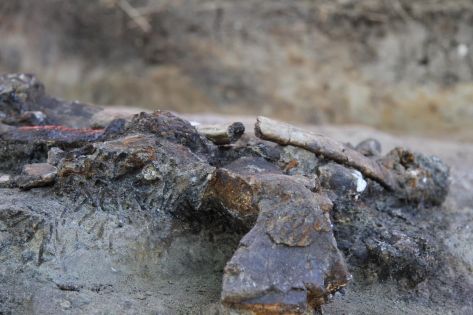NewsNext Previous
Humans were present in the Philippine islands as early as 700,000 years ago
An international team of prehistorians led by Dr Thomas Ingicco from the Museum National d’Histoire Naturelle, France, and M. Clyde Shago, from the National Museum of the Philippines discovered the oldest evidences for the peopling of the Philippines by Hominins. Dated to 709,000 years old, the archaeological site of Kalinga (Rizal Municipality, Kalinga Province, Luzon Island) is described in a publication in Nature journal on march 2
All along the Quaternary era (since 2.6 Million years ago), the Philippines have always formed a string of islands isolated from mainland Southeast Asia by deep sea straits. The oldest human presence in the Philippines up to now was 67,000 years old by Homo aff. sapiens (2010). The Kalinga site, excavated since 2014 and dated to 709,000 years by several physico-chemical methods (Electro-spin resonance, disequilibrium in the argon family and in the uranium family, palaeomagnetism), proves that the first colonization was actually ten times older, dating back to the early Middle Pleistocene about 800,000 years before present.
 Rhino bones from the archaeological site of Kalinga on which butchery marks have been recovered (©MARCHE, MNHN & National Museum of the Philippines)
Rhino bones from the archaeological site of Kalinga on which butchery marks have been recovered (©MARCHE, MNHN & National Museum of the Philippines)
The archaeological excavation has delivered several animal remains among which are the monitor lizard, the box turtle, the Philippine brown deer, the Stegodon (a cousin of the elephant) and the rhinoceros which is now extinct in the Philippines since at least 100,000 years. For this latter species, Rhinoceros philippinensis, an almost complete individual was recovered in association with tens of prehistoric stone tools made on anvil. The rhino carcass further shows several butchery marks such as cut marks on the ribs and on the foot bones, and percussion marks to break the arm bones allowing extraction of the marrow. All these archaeological findings are so many indirect proofs for a very old presence of early humans also known as Hominins on the island of Luzon.
The way of arrival of this fauna and these Hominins on the islands at these old times is still under question. While herbivores are known to be excellent long distance swimmers and could have arrived that way to the Philippines during one of the low sea level period, such a hypothesis is impossible for humans. Did another species than Homo sapiens ever mastered sailing skills or was this colonization accidental thanks to natural rafts such as floating mangrove that typhoons occasionally break off, a rare but well documented phenomenon?
The archaeological investigations of the Kalinga site were mainly funded by the French Department for Foreign Affairs, the National Museum of the Philippines, the University of the Philippines and the National Geographic Society.
Reference
Ingicco, T., et al., “Earliest known hominin activity in The Philippines by 709 thousand years ago”, Nature (2018).


